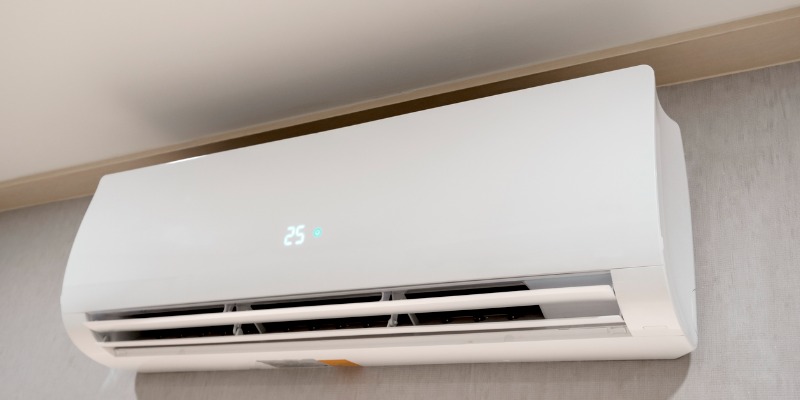
Air conditioning has become synonymous in Canada. Central AC is not the only cooling solution for your home. Here we offer five alternatives to central air to help keep your home more comfortable.
1. Portable Air Conditioners
The portable air conditioner is a perfect central air alternative for smaller homes, or to help keep the highest traffic room(s) in your home cool. They work by venting warm air outside either via the window, a fireplace, or a hole in the wall. On the one hand, this is cost-effective because you only pay for a small unit for the area you use most often. However, although it might seem like a cost-effective solution from this point of view, it actually uses more energy. As well if you are concerned about the environment, you won’t find a unit with an Energy Star rating.
2. Window Air Conditioners
This is the old standby offering easy installation and direct cooling that makes a real difference as an alternative to central air. These units work along the same lines as a central AC unit, using refrigerants to cool air and circulate it into the room. They are reasonably affordable, and surprisingly energy efficient. So, if you have a single room to cool, or a small, open-concept apartment, this is an excellent option.
There are some disadvantages. First, it can be hard to find a unit that fits your window. Next, they also don’t do much for curb appeal and can be quite noisy indoors and outdoors. You also lose natural light and a good portion of your view. For these same reasons, many condos and building managers don’t allow them. In this case, the portable air conditioner is a good home cooling alternative.
3. Energy-Efficient Alternatives to Air Conditioning
The mini-split system, also known as a ductless AC or heat pump is an excellent option for homeowners. This system offers heating in the winter and cooling in the summer. Unlike a central air conditioner system that uses forced air to heat and cool your home, the mini-split is ductless. It uses an outdoor unit that tempers the air and sends it back into the home via individual units. This allows you to create zones, cool a single room, or cool a series of rooms based on your needs. They come in single, dual, triple or quad-zone A/C units each with its own controller.
As a result, you only use the unit when the room is occupied. This makes it extremely energy efficient compared to central air that runs all the time. They are also far easier to install because they don’t require ducts. On the negative side, they tend to cost more, and many people don’t like the look of the interior units. However, over time you might find your savings in energy costs help balance the higher upfront costs. As well, compared to other alternative heating and air conditioning solutions like portable and window units, they are the lesser evil from an appearance standpoint.
4. Ceiling Fans
Ceiling fans help keep air circulating and can be set to drag hot air up to the ceiling and keep cooler air pushed down towards the floor. You only operate them as required, which can help save on energy. They are as easy to install as an overhead light when it comes to different air conditioning options. The light in the fan is turned on or off with a separate chain, so you don’t waste energy. They are affordable, come in many sizes and styles and provide a lovely breeze on hot days. However, they don’t actually “cool” a room like other home cooling alternatives, and it would be best to combine a ceiling fan with another cooling unit.
5. Eco-friendly Alternatives To Air Conditioning
There are a few eco-friendly alternatives to central air conditioning including:
- Hydronic cooling
- Hybrid solar air conditioners
- Geothermal cooling systems
- Ice-powered air conditioners
Each of these options offers its own benefits and innovative cooling methods that won’t harm the earth.
Whether you are looking for a central air conditioning alternative or wondering what the best central air conditioner for your home is, reach out to the Whitfield ClimateCare team to find the right solution for your needs.






